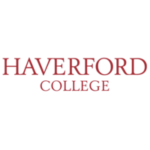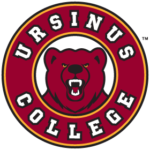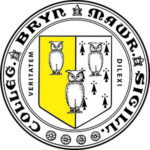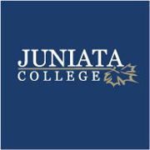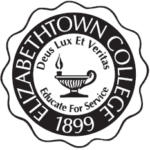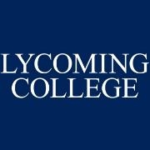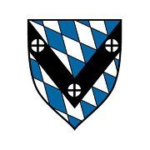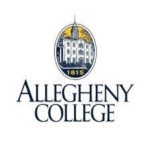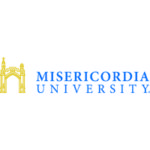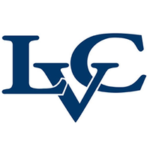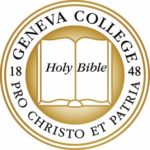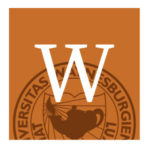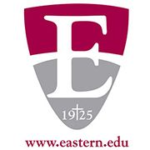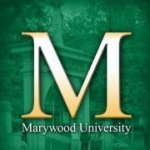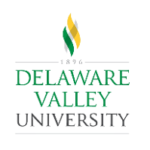
There are many reasons to attend a small college. They offer many advantages:
- a close-knit environment
- a small school with a certain religious affiliation
- a low student/faculty ratio
They are often in a position to be more focused than large universities. Because of this, there is sometimes a higher concentration of students attending for the degree you may be interested in. Smaller colleges make it easier to:
- integrate into your campus community
- participate in student government
- get access to your professors when you need it
They often (but not always) place less emphasis on research. This means that most of their professors will actually be teaching more than one or two token classes.
Ranking the Best Small Colleges in Pennsylvania
#1. Swarthmore College
Website
Score: 100
Swarthmore College is one of the nation’s top liberal arts universities, and it takes the top spot on our list of best small colleges in Pennsylvania. The school has a student population of just over 1,500 and an 8:1 student/faculty ratio. Among its many programs, Swarthmore boasts an ABET-accredited engineering program, the highest level of accreditation for engineering. Swarthmore has partnerships with:
- Haverford College
- Bryn Mawr
- The University of Pennsylvania
These partnerships allow students to take courses at any of the partner institutions once enrolled.
- U.S. News Ranking: National Liberal Arts #3
- 20yr Net Return on Investment: $746,000
- Out-of-State Tuition and Fees: $54,456
- Graduation/Transfer Rate: 94%
#2. Haverford College
Website
Score: 92.11
Haverford College has an undergraduate student population of just over 1,300 students and a student/faculty ratio of 8:1. Haverford was started by the Religious Society of Friends, but it has since dropped its religious affiliation. Haverford has the same partnership with the University of Pennsylvania that Swarthmore does. Among Haverford’s graduates are:
- 4 Nobel Prize winners
- 6 Pulitzer Prize winners
- numerous Rhodes Scholars and Fulbright Scholars.
- U.S. News Ranking: National Liberal Arts #15
- 20yr Net Return on Investment: $628,000
- Out-of-State Tuition and Fees: $59,162
- Graduation/Transfer Rate: 94%
#3. Washington & Jefferson College
Website
Score: 74.16
Washington & Jefferson College is a small liberal arts college with an undergraduate student population of just over 1,200 students. It has a 10:1 student/faculty ratio. Washington & Jefferson College accepts roughly 38% of applicants and uses a traditional liberal arts curriculum. The school offers 33 majors and 34 minors in areas like:
- accounting
- biochemistry
- computer science
- engineering
- philosophy.
- U.S. News Ranking: National Liberal Arts #96
- 20yr Net Return on Investment: $330,000
- Out-of-State Tuition and Fees: $50,169
- Graduation/Transfer Rate: 96%
#4. Ursinus College
Website
Score: 72.50
Ursinus College is a small liberal arts college located in Collegeville, Pennsylvania. The school has a student population of just over 1,400 and a 10:1 student/faculty ratio. Ursinus offers a variety of majors and minors including programs in:
- anthropology
- applied physics
- art history
- biology
- economics
- international relations
- mathematics
- physics
- sociology.
- U.S. News Ranking: National Liberal Arts Colleges #84
- 20yr Net Return on Investment: $402,000
- Out-of-State Tuition and Fees: $55,210
- Graduation/Transfer Rate: 81%
#5. Bryn Mawr College
Website
Score: 72.15
Bryn Mawr is a small liberal arts college located near Philadelphia, PA. It ranks high on our list of the best small colleges in Pennsylvania. Like its two sister colleges, Haverford and Swarthmore, it was originally associated with the Religious Society of Friends. It eventually dropped all religious affiliation. The student population is just over 1,700 with a 9:1 student/faculty ratio. Bryn Mawr shares the same relationship with the University of Pennsylvania as the other two schools.
- U.S. News Ranking: National Liberal Arts #28
- 20yr Net Return on Investment: $274,000
- Out-of-State Tuition and Fees: $54,440
- Graduation/Transfer Rate: 84%
#6. Juniata College
Website
Score: 70.02
Juniata College is located in central PA, in the town of Huntingdon. The school has a student population just over 1,400 and an 11:1 student/faculty ratio. Juniata College is affiliated with the Church of the Brethren. Instead of majors, Juniata College has programs of emphasis. These allow students to design their own undergraduate degree. There are pre-set programs of emphasis to use as guides. However,students are free to alter any program to meet their needs and interests.
- U.S. News Ranking: National Liberal Arts #84
- 20yr Net Return on Investment: $371,000
- Out-of-State Tuition and Fees: $49,175
- Graduation/Transfer Rate: 78%
#7. Elizabethtown College
Website
Score: 68.76
Elizabethtown College is another small liberal arts college affiliated with the Church of the Brethren. Located in Elizabethtown, PA, the school has an undergraduate student population of 1,729 and an 11:1 student/faculty ratio. If you’re interested in a more traditional academic structure that uses majors and minors, Elizabethtown College is a great choice. The school offers majors in areas like:
- actuarial science
- chemistry
- computer science
- criminal justice
- economics
- digital media production
- fine arts
- graphic design.
- U.S. News Ranking: National Liberal Arts #113
- 20yr Net Return on Investment: $384,000
- Out-of-State Tuition and Fees: $32,960
- Graduation/Transfer Rate: 69%
#8. Lycoming College
Website
Score: 68.63
100% of Lycoming College’s 1,140 undergraduate students receive financial aid and scholarships. 98.3% of graduates in 2019 found employment within a year of graduation. Lycoming College is one of the first 50 colleges established in the United States and is still affiliated with the Methodist Church, which founded the school. Lycoming College is on an upward trend in the rankings. It’s climbed 37 spots in the U.S. News ranking to its current position. Lycoming College offers over 60 majors. It offers students an interdisciplinary program that allows them to design their own major if they wish.
- U.S. News Ranking: National Liberal Arts #117
- 20yr Net Return on Investment: $255,000
- Out-of-State Tuition and Fees: $42,939
- Graduation/Transfer Rate: 92%
#9. Saint Vincent College
Website
Score: 68.15
Saint Vincent College is a small liberal arts college in Latrobe, Pennsylvania in the foothills of the Allegheny Mountains. The school has just over 1,700 students and an 11:1 student/faculty ratio. Saint Vincent is a Roman Catholic college founded and operated by Benedictine monks who were part of the first Benedictine monastery in the United States. Saint Vincent offers many degrees, among them programs in:
- data science
- education
- engineering
- finance
- information systems
- liberal arts
- mathematics
- nursing
- philosophy
- theology.
- U.S. News Ranking: National Liberal Arts #140
- 20yr Net Return on Investment: $262,000
- Out-of-State Tuition and Fees: $37,604
- Graduation/Transfer Rate: 93%
#10. Allegheny College
Website
Score: 65.87
Allegheny College is one of the oldest colleges in the United States, founded in 1815. The school has an undergraduate student population of 1,775 and a 10:1 student/faculty ratio. While the school is historically affiliated with the United Methodist Church, it doesn’t incorporate religion into the classes. Allegheny College offers 32 undergraduate majors and numerous interdisciplinary programs. The interdisciplinary programs include:
- community & justice studies
- classical studies
- integrative informatics
- international studies
- journalism in the public interest
- environmental science & sustainability.
- U.S. News Ranking: National Liberal Arts #80
- 20yr Net Return on Investment: $293,000
- Out-of-State Tuition and Fees: $50,980
- Graduation/Transfer Rate: 74%
#11. Misericordia University
Website
Score: 65.36
Misericordia University is a Roman Catholic university established by the Sisters of Mercy in 1924. It is located in northeastern Pennsylvania in the mountain town of Dallas. Misericordia offers 37 degree programs spread across three academic colleges. Majors include:
- biochemistry
- chemistry
- computer science
- healthcare analytics
- healthcare management
- health science
- information technology
- mathematics
- medical imaging
- nursing
The school has 1,964 undergraduate students and a 10:1 student/faculty ratio.
- U.S. News Ranking: National #206
- 20yr Net Return on Investment: $317,000
- Out-of-State Tuition and Fees: $35,940
- Graduation/Transfer Rate: 94%
#12. Lebanon Valley College
Website
Score: 64.91
Lebanon Valley College is a small, private college in Annville, Pennsylvania. The school has 1,729 undergraduate students and an 11:1 student/faculty ratio. Lebanon Valley College offers over 40 majors across six colleges. These programs include:
- audio & music production
- music business
- digital communications
- interaction design
- music education
- nursing
- neuroscience
- political science.
- U.S. News Ranking: Regional #38
- 20yr Net Return on Investment: $337,000
- Out-of-State Tuition and Fees: $46,030
- Graduation/Transfer Rate: 78%
#13. Geneva College
Website
Score: 64.10
Geneva College is a small Presbyterian college located in Beaver Falls, PA. The school has about 1,300 undergraduate students and an 11:1 student/faculty ratio. Geneva has a variety of programs you don’t see everywhere, including programs in:
- aviation business administration
- aviation/missions
- aviation/independent
The school also offers programs in:
- computer information systems
- computer science
- biblical studies
- communication
- allied health programs.
- U.S. News Ranking: Regional #93
- 20yr Net Return on Investment: $268,000
- Out-of-State Tuition and Fees: $29,040
- Graduation/Transfer Rate: 89%
#14. Immaculata University
Website
Score: 63.82
Immaculata University is a Roman Catholic university founded by the Sisters, Servants of the Immaculate Heart of Mary. The approximately 300-acre campus is located in the small East Whitman Township in Chester County, PA. The school has just over 1,500 undergraduate students and a 9:1 student/faculty ratio. Immaculata offers majors in:
- art
- business
- education
- emergency planning
- communication
- exercise science
- fashion
- global languages & cultures
- history
- music
- nursing
- philosophy & theology, among others.
- U.S. News Ranking: National #241
- 20yr Net Return on Investment: $366,000
- Out-of-State Tuition and Fees: $27,750
- Graduation/Transfer Rate: 91%
#15. Waynesburg University
Website
Score: 63.78
Waynesburg University is a small, private university affiliated with the Presbyterian Church (USA). The undergraduate student population at Waynesburg is almost 1,300. The school has a student/faculty ratio of 12:1. Waynesburg offers a variety of programs for people seeking an education for a career in Christian ministry, and for those seeking a degree for their secular career. You will find degrees in:
- children & youth ministries
- Christian mission
- computer science
- criminal justice administration
- cybersecurity & forensics
- digital design
- data science
- healthcare management
- information technology, among others.
- U.S. News Ranking: Regional #62
- 20yr Net Return on Investment: $173,000
- Out-of-State Tuition and Fees: $26,500
- Graduation/Transfer Rate: 91%
#16. Eastern University
Website
Score: 61.69
Eastern University is affiliated with the American Baptist Churches USA, but the student population is interdenominational. The school has about 1,700 undergraduate students with a student/faculty ratio of 10:1. Eastern University offers degrees from undergraduate, certificate and associate’s degrees up to the post-graduate level. You will find programs in:
- marketing
- organizational leadership
- music education
- nursing
- theological studies & ethics
- history
- political science
- mathematics
- engineering, among others.
- U.S. News Ranking: Regional #83
- 20yr Net Return on Investment: $240,000
- Out-of-State Tuition and Fees: $34,706
- Graduation/Transfer Rate: 86%
#17. Westminster College
Website
Score: 61.66
Westminster College is a small liberal arts college, affiliated with the Presbyterian Church (USA). The school has an undergraduate student population of nearly 1,200 students. The student/faculty ratio is 11:1 with an average class size of 17 students. Westminster College offers 42 majors and 13 pre-professional programs. 98% of students receive financial aid including merit and need-based scholarships.
- U.S. News Ranking: National Liberal Arts Colleges #120
- 20yr Net Return on Investment: $256,000
- Out-of-State Tuition and Fees: $37,675
- Graduation/Transfer Rate: 70%
#18. Marywood University
Website
Score: 59.10
Marywood University is a Roman Catholic liberal arts university located in Scranton, Pennsylvania. It was founded by the Sisters, Servants of the Immaculate Heart of Mary in 1915. It has about 1800 undergraduate students and a 12:1 student/faculty ratio. The school offers over 50 majors. 99% of the 2019 graduating class is employed or in graduate school. Some of the most unique undergraduate programs are:
- art therapy
- aviation
- interior architecture
- music therapy.
- U.S. News Ranking: Regional #59
- 20yr Net Return on Investment: $116,000
- Out-of-State Tuition and Fees: $36,928
- Graduation/Transfer Rate: 90%
#19. Delaware Valley University
Website
Score: 58.56
Delaware Valley University is a small university with an undergraduate student population of just over 1,900. It has a 13:1 student/faculty ratio. Delaware Valley University offers a wide range of agriculture- and nature-focused programs in areas like:
- agribusiness
- animal science
- conservation & wildlife management
- crop science
- dairy science
- equine management
- equine science
- food science
- horticulture
- landscape architecture
- landscape design, to name a few.
- U.S. News Ranking: Regional #125
- 20yr Net Return on Investment: $159,000
- Out-of-State Tuition and Fees: $40,620
- Graduation/Transfer Rate: 90%
#20. Seton Hill University
Website
Score: 58.44
Seton Hill University has an undergraduate student population of 1,728 and a 14:1 student/faculty ratio. It’s a private Roman Catholic university located in Greensburg, PA and was founded by the Sisters of Charity. Seton Hill offers a wide variety of STEM majors in areas like:
- chemistry
- biology
- computer science
- biochemistry
- cybersecurity
- data analytics
- graphic & interactive design
- mathematics.
- U.S. News Ranking: Regional #43
- 20yr Net Return on Investment: $77,700
- Out-of-State Tuition and Fees: $37,946
- Graduation/Transfer Rate: 91%
Frequently Asked Questions
Why is graduation rate important? Why do you also add the transfer rate to the score?
One might think that graduation rate just shows how many students had the ability or wherewithal to complete their programs. But the reality is that some schools are better at helping their students succeed than others. Graduation rate shows the industriousness and quality of the students. It also shows how well the college supports their students and provides for their physical, mental, and academic wellbeing.
The transfer rate indicates that when students feel a school is not a good fit for them, the school can help them transfer to a school that fits them better. Some schools are designed to allow students to transfer easily to other schools once they complete their first year or two of school. A student who transfers hasn’t dropped out, they’ve just decided a different school is a better fit for them personally.
Why is tuition a part of your metric?
Well, we are a website that creates content in line with our name. Great College Deals strives to ensure that students have the information to choose a quality school. This also means choosing the school that has the highest chance of setting them up for success. Part of this means factoring in the cost of the school. A great degree can still set you back if you owe so much in student loans that you have trouble paying them off in a reasonable time. So we make sure to factor in the cost when we create our rankings.
What exactly is this return on investment category? Why is it important?
The first thing to understand is that the return on investment we feature here isn’t a guarantee. It’s simply the average 20 year net return on investment as reported by graduates of the university. This is useful information because it helps paint a picture of how well a school sets up its students for success, on average.
The return on investment factors in:
- the cost of the school
- the average student loan debt of the graduating students
- the out-of-pocket costs after the average financial aid is applied
- the money you lose in the four years attending the school instead of working
Then they calculate how much more graduates earn, on average, than people who didn’t go to college but entered the workforce immediately. Essentially, it indicates whether or not, and by how much, students who attend the given school come out ahead financially than those who did not attend college.
Are there colleges and universities with a negative ROI? Schools where the average graduates are worse off financially than people who didn’t go to college at all?
The answer is yes
We exclude those schools from our rankings based on this sole factor. In our estimation, it doesn’t matter how well you do in all the other categories if you come out worse off than if yoiu had just skipped college.
That’s not a great deal.
Why do you include the ranking of a school by U.S. News & World Report in your evaluation?
U.S. News provides a different service than we do. They rank just about all the schools that they can get proper data for. It’s a useful tool, but its overall rankings are rather broad in scope. Our ranking articles are more specific. They make it easy to find niche ranking categories without filtering through an overwhelming number of schools that aren’t relevant to your college search.
This article is a good example. We factor in financial aspects more heavily because we focus on helping you find the best deals available. However, if you’re reading this article, I hope you’re looking for a small college in the state of Pennsylvania. That’s a lot of highly specific criteria. Essentially, our goal is to do the work of filtering through a ton of data to and then featuring the best schools and the data we found to make your search easier.
Methodology
The weights for each category are as follows.
Tuition: 10%
Graduation Rate: 30%
Return on Investment: 30%
National Ranking: 30%
Regional Ranking: 20%
No schools are ranked regionally and nationally at the same time. We evaluate regional rankings to be of ⅔ the value of national rankings. Why? Because these schools only compete against a smaller pool of schools in their specific region that are not nationally ranked.
For tuition, the points are awarded according to how much less a school’s tuition is compared to the most expensive school in the entire pool of schools considered. We do this even if the most expensive school in the pool did not make it into the final ranking.
With this methodology, no school can score 100 because no school has $0 tuition or 100% graduation rate. Once all the schools’ points are calculated, the top school is curved to a score of 100. Then each other school’s score is curved up by adding the same percentage of its own score to its score.
Sources:
College ROI: Payscale
U.S. News Rankings: U.S. News and World Report
Tuition and Graduation Rate: National Center for Education Statistics
Other articles of interest:
- 20 Deals: Small Colleges for Environmentally-minded
- 50 Best Deals on Competitive Small Colleges
- Top 20 Deals on Small Colleges in Texas
- 30 Best Deals on Colleges that Don’t Require SAT
- 20 Best Deals: Small Colleges for Athletic Types
- 20 Highest Paying Bachelor Degrees
GCD Staff
May 2021

